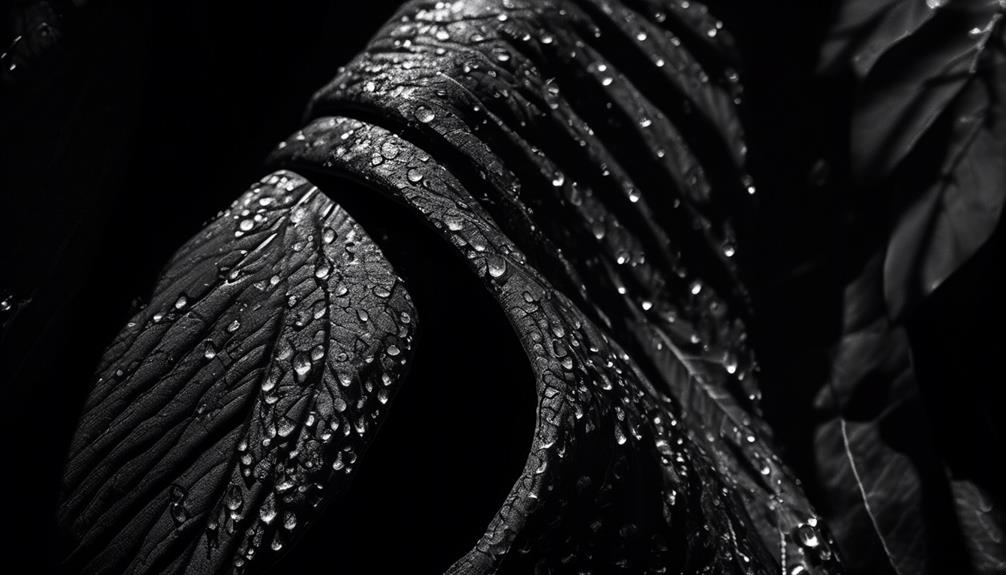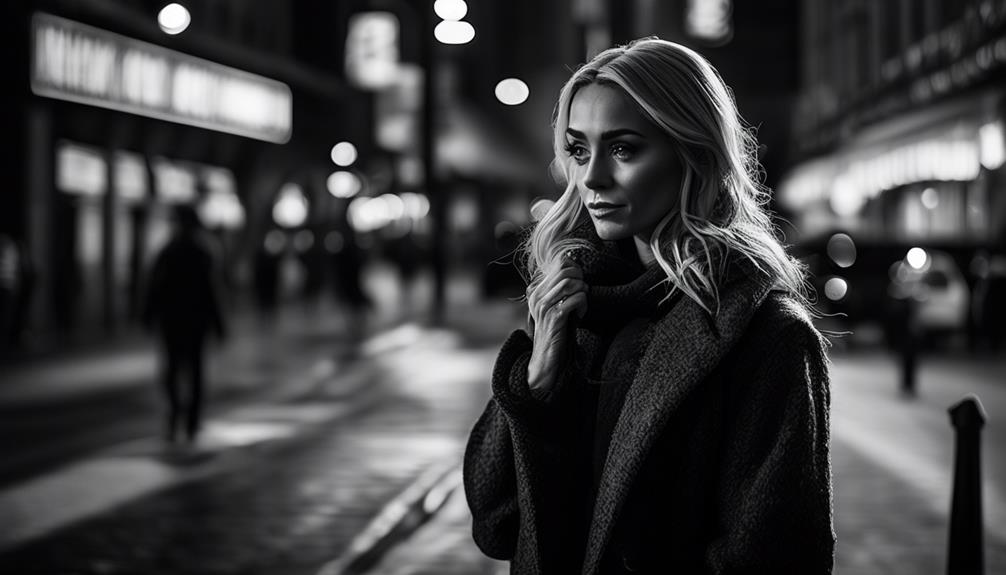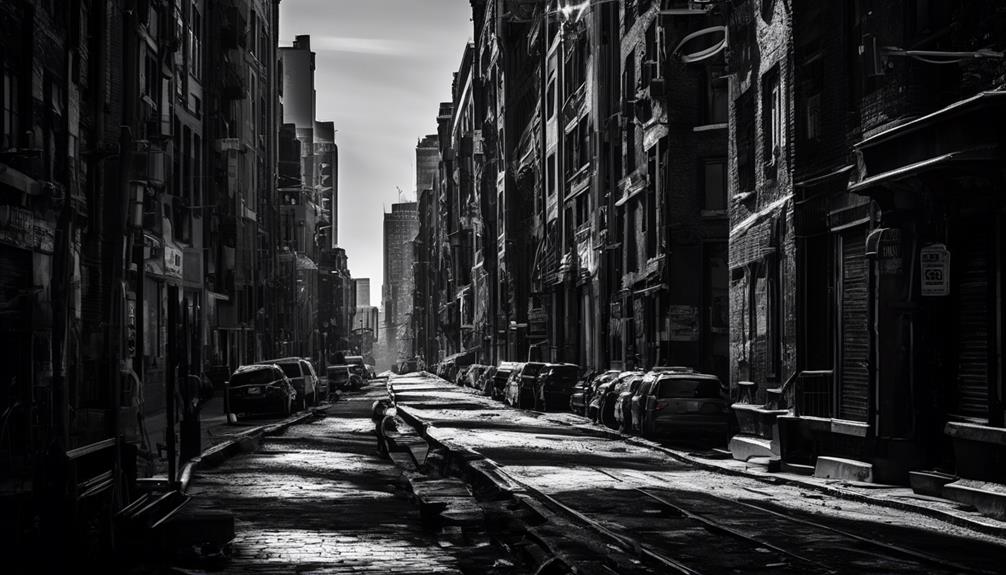Please note this post may contain affiliate links picked by me (Jay) that I have deemed may be of interest or relevant to you the reader of this.
These links do not affect the cost of the thing if you decide to purchase but i may get a little money if you choose to purchase.
For more information on my affiliate link policy click here.
Have you ever wondered what makes black and white photography truly exceptional? Is it the way it captures the essence of a moment, the timeless quality it possesses, or perhaps something else entirely?
As a photographer, I have spent countless hours experimenting and honing my skills to uncover the nine fundamentals that separate ordinary black and white photographs from extraordinary ones.
In this discussion, I will delve into the intricacies of these fundamentals, exploring the power of contrast, mastering composition techniques, understanding light and shadows, emphasizing texture and detail, and capturing mood and emotion.
So, let's embark on this journey together, unraveling the secrets behind creating exceptional black and white photographs that will leave you captivated and inspired.
Key Takeaways
- Contrast is essential for creating depth and visual interest in black and white photography.
- Manipulating light and shadows can enhance the impact and mood of black and white images.
- Emphasizing texture and detail adds a dramatic effect to black and white photographs.
- Capturing mood and emotion in black and white photography requires thoughtful subject selection, composition, and storytelling elements.
The Power of Contrast
Contrast is a fundamental element in black and white photography that adds depth, dimension, and visual interest to an image. It allows photographers to explore the tonal range of a scene, creating dramatic imagery that captures the viewer's attention.
When we talk about contrast in black and white photography, we're referring to the difference between the lightest and darkest areas of an image. By carefully manipulating this difference, we can create a dynamic composition that evokes emotion and draws the viewer into the photograph.
One way to achieve contrast is by using lighting techniques. By placing a subject in front of a light source and allowing shadows to fall across the scene, we can create a sense of depth and drama. This technique is often used in portrait photography to highlight specific features or create a mood.
Another method is through post-processing. By adjusting the levels of brightness and darkness in an image, we can enhance the contrast and bring out the details in both the highlights and shadows. This allows us to create a more impactful and visually striking photograph.
Mastering Composition Techniques
Now that we understand the power of contrast in black and white photography, it's time to explore the next step in creating captivating images: mastering composition techniques. Composition plays a crucial role in photography, as it determines how the elements within the frame are arranged and how they interact with one another.
By using leading lines and the rule of thirds, we can create visually compelling and balanced compositions.
- Leading lines: Utilizing leading lines is an effective way to guide the viewer's eye through the image. Whether it's a road, a fence, or a row of trees, these lines draw attention to the main subject and create a sense of depth and movement.
- Rule of thirds: The rule of thirds is a compositional guideline that divides the frame into a 3×3 grid. By placing the main subject or points of interest along these grid lines or at their intersections, we can create a more dynamic and visually pleasing composition.
- Balance: Achieving balance in composition involves distributing the visual weight of elements within the frame. This can be achieved through symmetry, asymmetry, or the strategic placement of objects.
- Negative space: Negative space refers to the empty or unoccupied areas within the frame. Utilizing negative space effectively can enhance the impact of the main subject and create a sense of simplicity and minimalism.
- Frame within a frame: Creating a frame within the image can add depth and dimension. This can be accomplished by using natural elements like archways, windows, or trees to enclose the subject.
Understanding Light and Shadows
Understanding the interplay of light and shadows is essential in mastering the art of black and white photography. The manipulation of light is what gives black and white images their depth, contrast, and visual impact. As a photographer, it's crucial to understand how different lighting conditions can affect your composition and the overall mood you want to convey.
One technique that can be used to create dramatic black and white images is low key lighting. This involves using predominantly dark tones and deep shadows to create a sense of mystery and intrigue. By carefully controlling the light and shadow areas, you can emphasize certain elements in your composition and create a strong visual impact.
On the other hand, high key lighting is another technique that can be employed to create striking black and white images. This technique involves using predominantly bright tones and minimal shadows, resulting in a clean and minimalist aesthetic. High key lighting is often associated with a sense of purity, innocence, and simplicity.
Understanding how to use both low key and high key lighting techniques in your black and white photography allows you to effectively manipulate the mood and atmosphere of your images. Experimenting with different lighting setups and understanding how they interact with shadows will help you create visually stunning and innovative black and white photographs.
Emphasizing Texture and Detail
To capture the intricate textures and fine details in black and white photography, careful attention must be paid to lighting, composition, and post-processing techniques. These elements work together to emphasize texture and detail, creating visually captivating images that engage the viewer's senses.
Here are some ways to achieve this:
- Exploring different perspectives: Experiment with various angles and viewpoints to highlight the unique textures and details of your subject. Get up close and personal, or step back to capture the bigger picture. By exploring different perspectives, you can uncover hidden textures and details that might've otherwise gone unnoticed.
- Utilizing post-processing techniques: Post-processing can significantly enhance the texture and detail in your black and white images. Techniques like dodging and burning, selective contrast adjustments, and sharpening can bring out the fine details and add depth to your photographs. Experiment with different editing tools and techniques to find the ones that work best for your desired effect.
- Paying attention to lighting: Lighting plays a crucial role in emphasizing texture and detail. Experiment with natural light, directional light, or even artificial lighting to create shadows and highlights that enhance the textures and details in your images. Play with the intensity, direction, and angle of light to achieve the desired effect.
- Composing thoughtfully: Composition is key when it comes to emphasizing texture and detail. Pay attention to the placement and arrangement of elements within the frame. Consider using leading lines, patterns, and symmetry to guide the viewer's eye towards the textures and details you want to highlight.
- Focusing on contrast: Contrast is essential in black and white photography to bring out texture and detail. Look for subjects with inherent contrast, such as a rough surface against a smooth one or a dark object against a light background. You can also enhance contrast in post-processing to create a more dramatic effect.
Capturing Mood and Emotion
After mastering the techniques of emphasizing texture and detail in black and white photography, it's time to explore the powerful art of capturing mood and emotion through your images. As photographers, we have the ability to not only capture a moment in time, but also to convey the feelings and emotions associated with that moment.
By understanding the elements that contribute to mood and emotion, we can create images that tell compelling stories and evoke a sense of nostalgia.
Exploring storytelling is a key aspect of capturing mood and emotion in black and white photography. Each photograph has the potential to tell a unique story, and it's up to us as photographers to capture that story in a way that resonates with the viewer. By carefully selecting our subjects, framing the shot, and paying attention to composition, we can create images that invite the viewer to engage with the narrative and experience the emotions captured within the frame.
Conveying nostalgia is another powerful tool in black and white photography. The absence of color allows us to focus on the raw emotions and the essence of a moment. By incorporating elements such as vintage objects, old buildings, or even sepia-toned filters, we can transport the viewer back in time and evoke a sense of longing or wistfulness. Nostalgia has a way of connecting people to their past experiences and emotions, making it a valuable tool for capturing mood in black and white photography.
Frequently Asked Questions
What Camera Settings Should I Use for Black and White Photography?
I love black and white photography because it allows me to capture the essence of a scene in a timeless way.
When shooting in black and white, I pay close attention to my camera settings to achieve the desired effect. By adjusting the ISO, aperture, and shutter speed, I can control the contrast and tonal range in my images.
Additionally, I employ composition techniques such as leading lines and strong visual elements to create visually striking black and white photographs.
How Can I Create a Sense of Depth in My Black and White Photographs?
To create a sense of depth in black and white photographs, I focus on creating impactful contrast and mastering lighting techniques.
By using strong highlights and deep shadows, I can add dimension to my images.
I also pay attention to composition, using leading lines and layering to create a sense of depth.
Experimenting with different angles and perspectives can also help to create a three-dimensional feel in my black and white photographs.
Are There Any Specific Subjects That Work Best for Black and White Photography?
When it comes to black and white photography, there are no specific subjects that work best. It really depends on the style and vision of the photographer.
Portraits can be powerful in black and white, capturing the essence of a person without the distraction of color.
On the other hand, landscapes can convey a sense of drama and contrast in black and white.
Still life and street photography can also benefit from the timeless quality that black and white brings.
Ultimately, it's about experimenting and finding what subjects resonate with you and your artistic expression.
Can I Convert a Color Photograph to Black and White in Post-Processing?
I gotta say, converting a color photograph to black and white in post-processing can really give it a whole new vibe. There are some pretty cool techniques you can use to do it, like adjusting the contrast and playing with the different tones.
The benefits of shooting in black and white are that it can add a sense of timelessness and drama to your photos. It's a great way to experiment and get creative with your shots.
What Are Some Common Mistakes to Avoid When Shooting Black and White Photographs?
When shooting black and white photographs, it's important to avoid common mistakes to ensure exceptional results.
Understanding the importance of lighting is crucial in black and white photography. Poor lighting can result in flat and dull images, so pay attention to the direction and quality of light.
Another mistake to avoid is relying too heavily on post-processing to create a strong black and white image. Instead, focus on capturing compelling subjects, textures, and contrast in-camera.
Conclusion
In conclusion, black and white photography has a unique ability to evoke powerful emotions through its use of contrast, composition, light, and texture. It captures the essence of a moment, revealing the mood and emotion hidden within.
Like a symphony of shadows and light, it paints a picture that speaks to the heart and soul.
So, let your lens be your brush, and explore the world through the timeless beauty of black and white photography.


